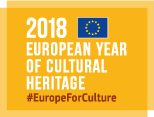Cultural gems: a free, open-source web app for European cities


Challenge: WHY the innovation has been developed? What problem is addressed and why has not been not solved before?
The Joint Research Centre is further developing the online presence of the Cultural and Creative Cities Monitor by developing Cultural gems, an Interactive Web App, especially tailored for Mobile users. Cultural gems aims at giving more visibility to the lesser known aspects of cities, giving a more in-depth overview of the local cultural and creative vibrancy, which includes also places which are not in the list of “best sellers”. Attempts to tackle these issues have been made in the past. Nevertheless some of these attempts take into account only specific geographical areas and specific topics, resulting in a fragmented or partial overview. Other available data are not easily accessible for the end-user. Cultural gems aims to start overcoming these issues, by providing a common interface for cultural and creative places at a European level.
Solution: WHAT the solution is about? HOW it goes beyond the state of the art?
The app aims at providing citizens, cultural third sector representatives, tourism offices and local administrators with the possibility to share and highlight less known cultural spaces, going beyond the main touristic spots. The pivotal function of the app consists of the provision of a mobile-enabled collaborative map, encouraging residents to share their favourite cultural and creative spots in a map-based interface. Cultural gems will allow city residents and visitors to discover the “cultural pulse” of the city in an interactive way. Cultural gems aims at going beyond the current proprietary solutions by providing a Europe-wide open source sharing platform on culture and creativity. Cultural gems collects information about points of interests ranging from museums to live music venues and arts centres, in the attempt to overcome specialisation of culture and creativity maps.
End-users and examples of uses: WHO will beneficiate/ is beneficiating from the solution? WHERE and HOW the solution has been adopted? How will impact people or end-users? Add as more as possible examples of market and society uptakes
The potential users of the app include three main groups: Tourists visiting EU cities will be able to go beyond the most known touristic attraction, getting a taste of the cultural spots which make up the cities’ vitality. Tourists will also be able to rate and comment cultural and creative attractions in the city and to discover the hidden cultural gems of the city through treasure hunts: in order to progress in the path they will have to answer questions and solve riddles specific to each POI, and will earn experience points as they progress in the game. EU cities residents, who will be able to share their knowledge on unconventional and less known spaces on a map-based interface and to participate in open discussions in the embedded discussion board. Citizens will also be encouraged to create treasure hunts (quiz-based collections of POIs, linked together by thematic fil rouge). City administrators, representatives of the third sector and tourism offices will have access to an administrative interface, allowing them to fully manage the content related to their city. This includes the creation and editing of POIs and Treasure Hunts as well as the set-up of participatory processes in the discussion board embedded in the app.
Future possibilities: Future market perspectives when the innovation will be fully available or in use
Cultural gems will be a free, open source app aimed at providing a harmonised sharing platform to promote and support EU cities’ cultural places and engagement in culture. Cultural gems will be distributed to: • local administrators, tourism offices and representatives of the third sector, to provide a top-down sharing platform in support of city marketing. This provides for an institutional use, with a potentially wide coverage. • cultural festivals, providing support to their promotional activity. The adoption by these actors is likely to intercept very wide audiences in one-off events. • Citizens directly, though guided interactive workshops, discovering hidden cultural treasures in European cities. Despite having a smaller audience, this type of dissemination allows to get in closer touch with the end-users, enabling the provision of more in-depth guidance and information.
Media coverage
• Tweet by Commissioner Navracsics • Twitter coverage on EU Science Hub Twitter feed • Interview on Pythagora’s Shorts (Institution of Engineering and Technology) • Article on la Depeche • Live Facebook stream for one treasure hunt on EU Science Hub Facebook page • EU Science Hub headline
References for more information (eg. website, social media)
Contacts:
Francesco Panella (francesco.panella@ec.europa.eu)
Application sectors:
- Historical sites
- Heritage communities and participatory approach
Objectives:
- Other
RRI Dimensions:
- Public Engagement
- Open Access
Communities:
- Circular, sustainable and creative cities

